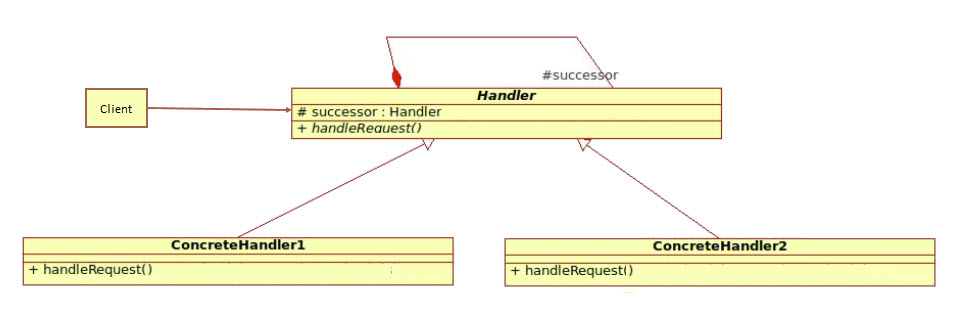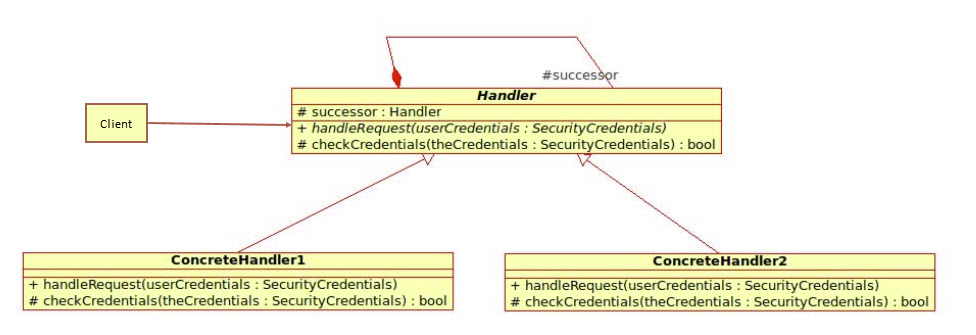Hello, 各位 iT 邦幫忙 的粉絲們大家好~~~
本篇是 建構安全軟體開發 系列文的 EP28。
在 SEI 於 2009 年出版的 Secure Design Patterns 論文摘要提及:
The cost of fixing system vulnerabilities and the risk associated with vulnerabilities after system
deployment are high for both developers and end users.
... 略 ...
The patterns were derived by generalizing existing best security design practices and by extending existing design patterns with security-specific functionality. They are categorized according to their level of abstraction: architecture, design, or implementation.
所以簡單的結論有關 Secure Design Patterns 可分成以下三個層級:
要在必須文件中明確定義 Architectural-Level 的各種 Patterns 設計,有關系統間不同層級之間的程式存取互動時,其職責與權限劃分要有架構性規劃,可根據下列幾個模式考慮:
要在必須文件中明確定義 Design-Level 的各種 Patterns 設計,軟體元件之間盡量透過安全的設計概念來區隔劃分,可根據下列的 Object Oriented 幾個有提到的 Design Ptterns (設計範式),將設計其系統元件組合或設計其安全設計模式的開發:
PS 這邊若是透過 Object-Oriented 觀點來撰寫 Design Ptterns 這個詞的翻譯是採用 "設計範式",這是對 侯捷老師 的敬重用法,而其他時候提及 Patterns 時則會採用 "模式"。
這裡以設計 "安全責任鍊模式" 為例:
如果考慮實作一個報表產生系統,那各種不同身份(角色)的系統使用者,應該只能根據該角色的權限取得應有的報表資料,以減緩機敏資料外洩的可能性。
假設一個報表系統內部定義的角色有:
管理者、銷售分析管理者、銷售分析員、銷售實習生(角色的權限排序由高至低)。
那相關的設計概念圖應該如下:

上圖取自 Secure Design Patterns 第 49 頁 Figure 10
平常 Design Patterns 當中的 "責任鍊模式" UML 圖應該如下:

那在 "安全責任鍊模式" 所設計觀點其 UML 圖會變為如下:

上圖取自 Secure Design Patterns 第 50 頁 Figure 11
朋友們能夠自行對照一下其中有何差異。
開發實作層級的模式基本原則有以下:
...等。
以上模式若可參考並運用在開發實作中,固然是很好,但其基本精神大致上就是在開發實作時,盡量落實 SEI 所提出的 "Top 10 Secure Coding Practice" 來去在開發實作中實踐,就可以達到很好的安全效果的!
根據設計進行再次的驗證與確認。
檢驗其實作是否符合設計,可進行以下活動:
另外,在 NIST 其中有個計劃稱之為 Software Assurance Metrics And Tool Evaluation (SAMATE) 其中有個 "The Bug Framework: BF" 的團隊。
BF 對 SEI 發表的有關 C 語言的 Secure Coding Standard 規範,而並由 BF 對其引導有關的 CWE:
https://samate.nist.gov/BF/Enlightenment/CERT%20C.html
而衍伸有興趣了解其他程式語言的 Coding Standard 可到下面的 SEI 網站查詢(但沒有 C#,顆顆):
https://wiki.sei.cmu.edu/confluence/display/seccode/SEI+CERT+Coding+Standards
Microsoft 對於 "Secure Coding Guidelines" 有在微軟文件專門篇章討論 "安全程式開發的指引" 請見下方連結:
https://learn.microsoft.com/dotnet/standard/security/secure-coding-guidelines

 iThome鐵人賽
iThome鐵人賽
 看影片追技術
看更多
看影片追技術
看更多